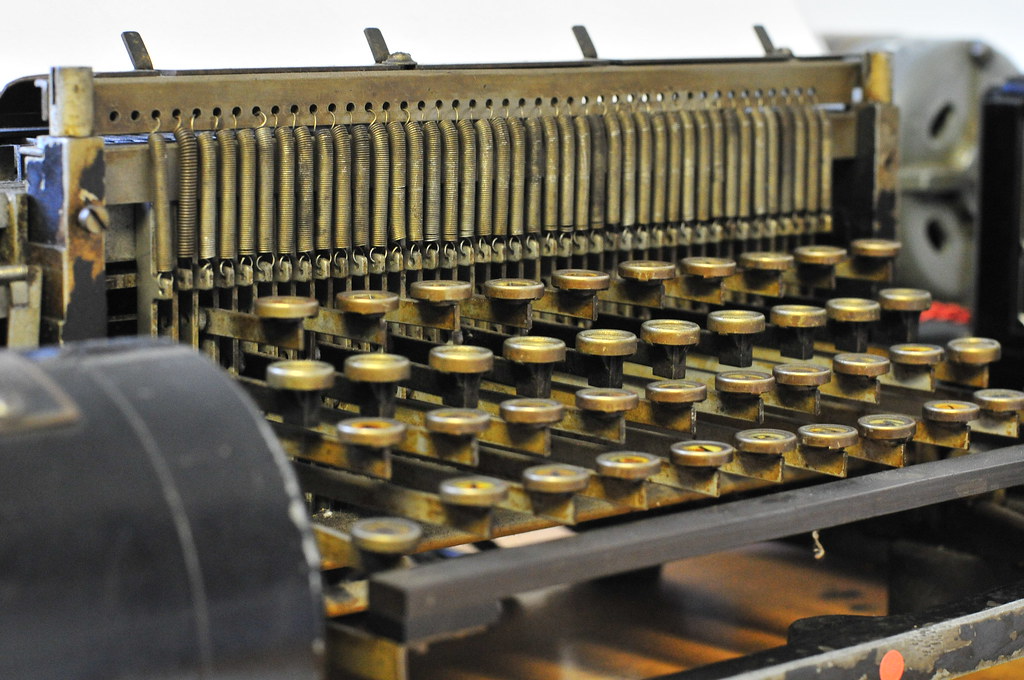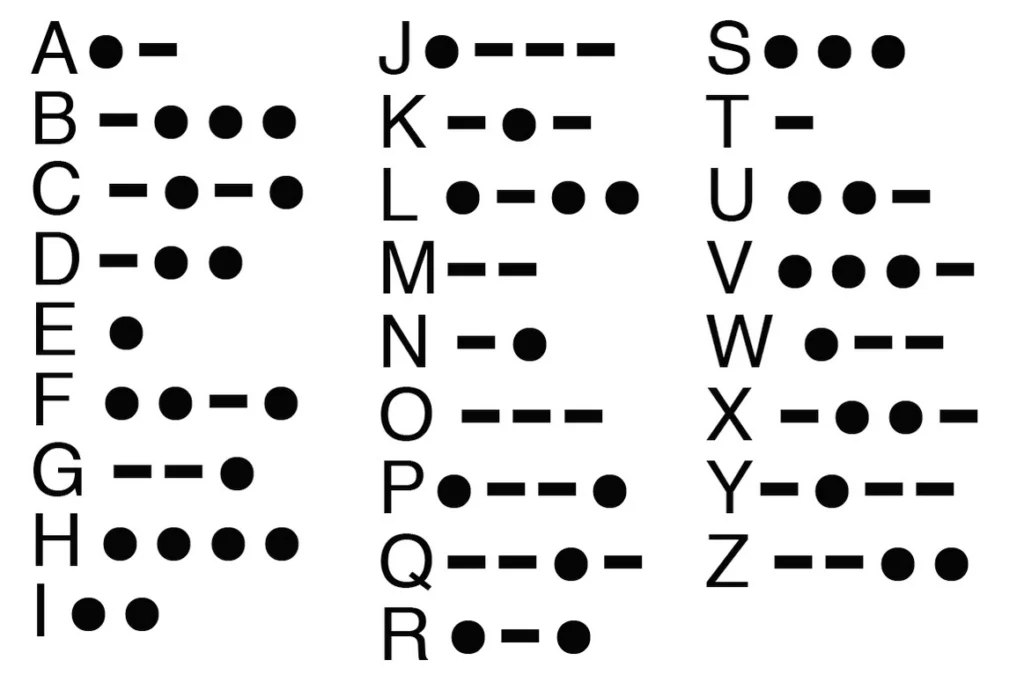What is Morse Code? (__ ___ ._. … . .. ___ _.. .)

Morse code (__ ___ ._. … . .. ___ _.. .) is a system of sending messages using a series of dots and dashes. Each dot or dash represents a letter, number, or punctuation mark. It was invented by Samuel Morse in the 1830s for the telegraph. People used it to send messages over long distances before phones and computers. Today, while less common, it's still used in some radio communications and for fun.
Table of Contents
What is Morse Code? __ ___ ._. … . .. ___ _.. .

Morse code is a system of dots and dashes representing English letters, numbers, and punctuation, simplifying and streamlining communication. Many radio operators, especially during World War II, relied on it heavily.
This system began in the 19th century. It was key for long-distance messages, especially before American Morse code evolved and we had phones and digital tools.
Its Significance in the Realm of Communication
In the age of the telegraph, the Dot-and-dash system bridged vast distances, connecting continents and people like never before. Radio navigation relied on it too. This tool changed global communication and became a main way of interacting for many decades.
Today, its influence remains evident in areas like amateur radio licensing, reminding us how dots and dashes once carried crucial messages around the world.
The Birth of Morse Code
The Inventors: Samuel Morse and Alfred Vail
Samuel Morse and Alfred Vail are the brains behind the Morse code. They came together in the 1830s to create this system. Samuel had the initial idea, while Alfred helped refine it.
The Timeline: When Was Morse Code Invented?
The story began in the early 1830s. It quickly became a key way to send messages across long distances. Before phones or the internet, this code was vital for amateur radio operators.
People could send news, ask for help, or just chat with someone far away, sometimes using a flashing light as a visual signal. All thanks to the dots and dashes that Samuel and Alfred introduced.
International Morse Code: An Evolution

While Samuel F.B. Morse's original code revolutionized communication, it struggled with non-English texts. To address this, the International dot-and-dash system was introduced in 1851.
Unlike the original, which used dots and spaces for some letters, the International version employed combinations of dots and short dashes for all letters, enhancing clarity.
This global code saw minor changes in 1938 and became vital in wars and maritime communication until the 1990s. Though the American telegraph industry remained loyal to the original, the International version gained worldwide acceptance.
Decoding Morse Code
The Foundational Elements: Dots, Dashes, and Spaces
Morse code uses a mix of dots (short signals) and dashes (long signals), often referred to as short and long tones, to represent letters and numbers. Spaces between these signals help us figure out where one letter ends and another begins.
It's a simple yet effective way to send messages without words.
Understanding Common Symbols and Phrases, Including 'SOS'
Each letter or number in Morse's method has its unique combination of dots and dashes. For example, the letter 'A' in Morse code has a dot followed by a dash.
One of the most well-known encoding system signals is 'SOS' which stands for 'Save Our Souls'. People often use it in emergencies, including the Coast Guard, and represent it as "...---...".
How to Use and Understand Morse Code

Reading, Writing, and Tapping in Morse
When you read Morse code, you look for groups of dots and dashes. These groups stand for different letters or numbers. To write in Morse, you convert each letter of your message to its code version.
Some folks even tap out Morse code messages using their fingers, a light, or a sound, like a beep. Radio operators often used electrical pulses for this.
The Process of Translating and Deciphering
Morse code translation means changing it into regular words and numbers. To do this, you match the dots and dashes to their corresponding letters or numbers. Deciphering is a bit different.
It involves decoding a Morse message that may be hard to interpret or is intentionally secretive.
Practical Exercises for Beginners
If you're new to this signal language, start by learning simple letters and numbers. Practice by writing your name or a short message. Then, try tapping it out or using a flashlight to "blink" it to a friend. With time, you'll get faster and more accurate.
Applications & Historical Impact
Maritime and Military Communication
Morse's invention wasn't just a neat way to send messages. It had big jobs, especially at sea and in the military. Ships used it to talk to other ships and to people on land.
Soldiers used it during wars to share plans and news without the enemy figuring out what they were saying. It was a game-changer.
How Morse Code Transformed America
When this Telegraphic language came to America, it changed a lot of things. News traveled faster. People in one part of the country could know what was happening far away, almost right away.
It helped businesses grow and brought people closer together. It was like an early version of the internet.
Why Was Morse Code Invented?
Before the invention of this telegraphic code, sending messages long distances was slow and hard. Letters took weeks or even months to reach their destination. Samuel Morse and Alfred Vail saw a need.
They wanted a faster, more reliable way to communicate.
Personal Expressions
Expressing Emotions: Saying 'I Love You' in Morse
This Signal language isn't just for serious stuff. People have used it to share feelings too! Want to tell someone you love them in a unique way?
Here is how you say it: "I love you" ".. ..-.. --- ...- . -.-- --- ..-". It's a fun and different way to send a heartfelt message.
Read More On How to say I love you in Morse code in our previous guide.
Crafting Memories
Crafty folks have come up with neat ideas to use Morse code. One popular way is making bracelets.
Imagine wearing a secret message on your wrist! Pick a word or phrase, change it into Morse code using dots and dashes, and use beads or knots for each symbol.
It's a stylish and personal piece of jewelry.
Modern-Day Relevance
Is the Dotted-Dashed Language Still Used Today?
Believe it or not, this classic form of communication isn't entirely a thing of the past. While we have so many new ways to chat and share news, the dot-and-dash system still has its place.
Pilots, sailors, and even radio enthusiasts sometimes use it, keeping the tradition alive.
Presence in Pop Culture: Films, Music, and Literature
The impact of our coded language doesn't stop with serious stuff. It appears in movies, songs, and books.
Filmmakers might use it for a suspenseful scene, musicians for a unique sound, and authors to weave in a mysterious element.
It's a testament to how this age-old system continues to capture our imagination.
Learning Morse Code
Resources and Methods for Learning the Dot-and-Dash System
While it might seem challenging at first, picking up this method of communication is rewarding. Many online tools, apps, and books help beginners learn.
With consistent practice, one can easily grasp the basics and then dive into more complex messages.
Tapping, Speaking, and Other Unique Morse Techniques
Once you're familiar with the basic symbols, you can start practicing. Try tapping out messages on a table or speaking them aloud.
There's also the method of 'blinking' messages using a flashlight or even using sounds, like beeps.
Experimenting with different techniques can make the learning process enjoyable and versatile.
Conclusion
Looking back, the impact of this dot-and-dash communication system is undeniable. From linking faraway places in its beginnings to its comeback in pop culture, it has stood the test of time.
Modern tech provides many instant messaging methods, but Morse has a lasting appeal that keeps it relevant in certain areas.
As we advance into an even more digital age, one might wonder about the place of such a historic method. However, its flexibility and unique features ensure people never forget it entirely.
Enthusiasts use it, emergency protocols include it, and artists incorporate it; Morse code stands as a testament to human innovation.
